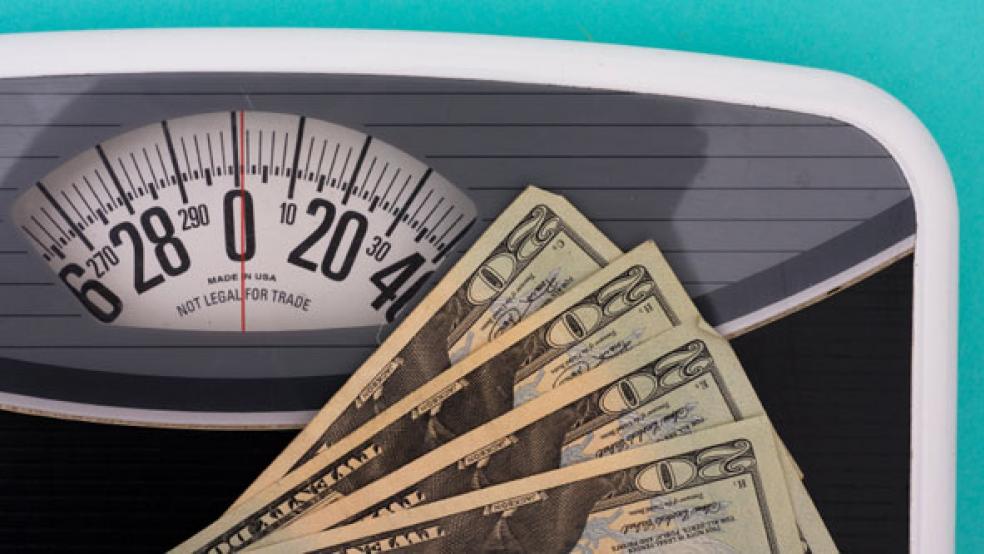More and more companies are implementing wellness programs to foster healthier workforces, from smoking-cessation coaching to weight-loss plans. But to design such programs effectively, employers need to know a lot about the health of each of their workers, so they can figure out where the greatest needs for improvement exist.

Toward that end, most large companies are now asking employees to complete health risk assessments (HRAs), questionnaires that ask workers to reveal such details as their weight, blood pressure and family history of disease. Experts agree that the HRA can be a useful tool, but only if employees actually bother to fill it out.
To increase HRA completion rates, firms have tried a variety of financial incentives, including gift certificates, contributions to medical savings accounts and cash rewards. In some cases, employers have even resorted to promising health-plan premium discounts of $1,500 to $2,000 a year to employees who fill out an HRA.
RELATED: Why a Smartphone Knows You're Sick Before You Do
According to Wharton health care management professor Kevin Volpp, employers shouldn't have to use that much money to increase HRA completion rates. In a study published last year in the American Journal of Health Promotion, Volpp and three co-authors — Emily Haisley from Barclays Wealth, Thomas Pellathy from McKinsey and George Loewenstein from Carnegie Mellon University — examined one potential method for making small financial incentives more effective: a lottery system that gives teams of employees the chance to increase their rewards by boosting their whole group's HRA completion rate.
The study is titled, "The Impact of Alternative Incentive Schemes on Completion of Health Risk Assessments."
"Not surprisingly, there's a relationship between the amount of the incentive and the rate at which people do the HRAs," Volpp says. "What we did in this study was look at a way to get more bang for the buck, to get higher rates of completion for the same amount of money."
Volpp and his co-authors were inspired by the postal code lottery in the Netherlands. Under that lottery system, any resident in a randomly selected postal code wins a prize, provided he or she bought a ticket before the drawing. "If everybody on [a given] street is in the same postal code and their number is drawn, that group of people splits 3 million euros," Volpp states. "You can imagine there would be a palpable sense of regret if you were one of the people on the street who had not bought a lottery ticket and you saw all your neighbors sharing the money."
CAPITALIZING ON PEER PRESSURE
Indeed, such contests feed on two common but powerful human forces: regret and social pressure. "One of the big questions in this design is how much to weigh the actions of individuals versus the actions of those around them," Volpp notes. "It's important to primarily emphasize actions that individuals have direct control over, and then enhance [their actions] based on what those around them do."
To translate the Dutch model into the workplace, the study's authors worked with 1,299 eligible employees in 14 U.S. offices of an unnamed company. In 2007, the HRA completion rate at the firm was just 27 percent, so the following year, it implemented a $25 cash prize for anyone who completed the questionnaire. That boosted the completion rate to 49 percent.

Volpp and his colleagues layered a lottery on top of the cash incentive to see if they could get even more employees to fill out the HRA. Employees selected to participate in the lottery were put into teams of four to eight people, and then informed that anyone on the team who completed the HRA prior to the drawing would get $100 if their team was selected. If 80 percent or more of the team members completed the questionnaire, they would all get $125.
There were no secrets: Each team member was told exactly who the other people on his or her team were. And everyone knew that once a week, one team at each worksite would be selected randomly to win.
There were two comparison groups as well. One was promised only the original $25 cash incentive for completing the HRA, while the other was eligible for that cash plus a $25 grocery gift certificate. Participants in each of those two groups received an e-mail explaining the HRA and what the incentives would be for completing it, followed by weekly reminder e-mails for each of the next four weeks.
As predicted, the lottery was remarkably effective. In the lottery group, 64 percent of participants completed the HRA, compared with 44 percent of people who received grocery gift certificates and 40 percent of those who only got the original $25 cash reward. Lower-income employees completed HRAs at a higher rate in the lottery group than in the other two groups — a result consistent with previous research showing that the demand for lotteries is highest among low-income populations.
Volpp believes that regret was an important force in the lottery portion of the study. "When people become aware of the fact that they could easily win a fairly substantial reward, they anticipate that if they don't win that reward, they are going to be disappointed in themselves for not having done what they needed to do," he says. "That can have some positive benefits."
RELATED: Obamacare Fallout: Cut Worker Hours or Drop Coverage
It might seem that stacking a $25 gift certificate on top of $25 in cash would boost HRA participation rates more than it did in this study, but Volpp wasn't surprised by the rather lackluster response in that particular group. "There's a growing amount of work that suggests that people are only partly rational," he notes. "There's a difference between $25 and $50, but it's not so big to necessarily have much of an effect."
CONFOUNDING FACTORS
The authors of the study cite several limitations that they think make the higher participation rates noted above a conservative assessment of the relative motivational powers of the lottery. For example, lottery participants were given only two days to register on the web to be part of the contest — an extra effort that may have been a turnoff for some. In fact, 20 percnet of employees assigned to the lottery arm of the study never got onto a team because they didn't register (excluding them from the denominator would make the HRA completion rate in the lottery arm 76 percent). What's more, lottery winners were paid via their paychecks, making the winnings taxable and less visible.
Another limitation, according to the authors, was that the lottery arm combined both individual and group incentives, making it difficult to discern how each feature contributed to the rise in HRA completion rates. "There are several dimensions that can be varied here," Volpp says. "There's the probability of winning. There's the magnitude of winning. There's the size of the group. There's individual versus group performance. These are all areas that we're very interested in further examining."
Volpp adds that he is also curious about the precise impact of social pressure in making lottery-based systems work. "The basic theory is that people will encourage others who are in their group to [complete the HRA] because they want to get the extra bonus," Volpp says. "We don't know to what degree that actually happens, but it certainly would be interesting to know."
Volpp reports that his team has since launched several other studies looking at the benefits of lottery-based incentive systems in other health arenas, including weight-loss programs for obese employees and programs designed to encourage people with chronic health conditions to take their medications.
ENCOURAGING HEALTHY HABITS
The study's authors suggest that lotteries could be applied to a range of desired health behaviors — both "one-shot" and ongoing activities. For example, employers might use lottery-based approaches to persuade workers to get their annual flu shots. For employees with chronic conditions such as diabetes or heart disease, lotteries might help encourage adherence to ongoing therapies.
Lottery-based incentive programs in the workplace fall broadly into the realm of behavioral economics, a field of study that looks at how psychological factors weigh on economic decisions. According to Volpp, employers should think about behavioral economics whenever they are trying to incentivize healthy habits in the workplace. "A well-designed program that uses behavioral economics will have a much bigger impact than a standard program that just raises the dollar amount of the reward."
That said, Volpp encourages employers to roll out lottery programs carefully, and to constantly monitor their effectiveness. "I think lotteries have to be used strategically," he notes. "In general, it's important to rigorously evaluate what's working and how to improve on it."
Meanwhile, the success of the study done by Volpp and his co-authors prompted the company that participated in it to permanently adopt the lottery as an incentive for HRA completion. There will be more companies using similar approaches, Volpp predicts. "About 80 percent of large employers in the U.S. are using incentives for health behavior, so this is becoming a very large trend," he says. "Enormous amounts of money are being spent by employers to incent people. I think the most important lesson in this study is that how the incentive is designed can play an even larger role than the magnitude of the reward in affecting people's behavior."
This article originally appeared at Knowledge@Wharton .




